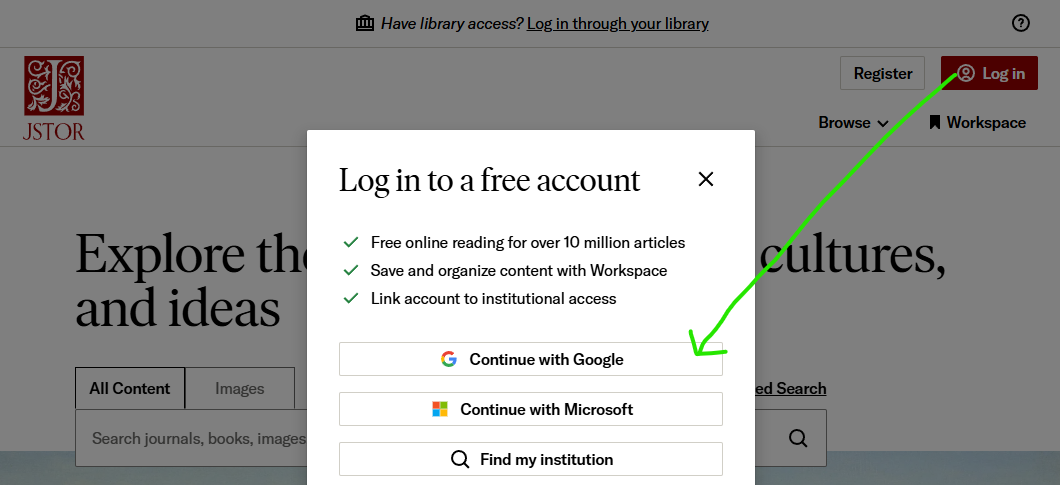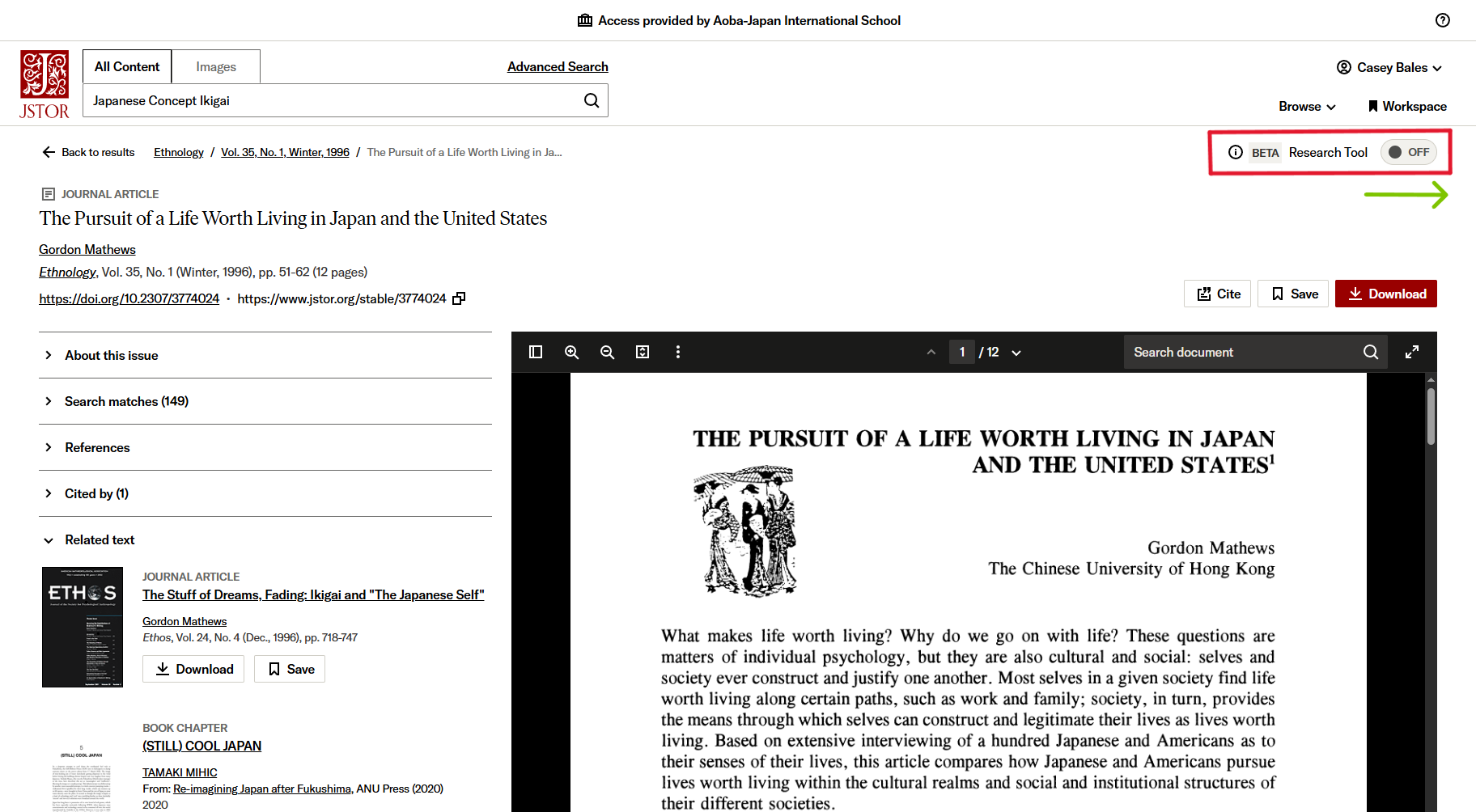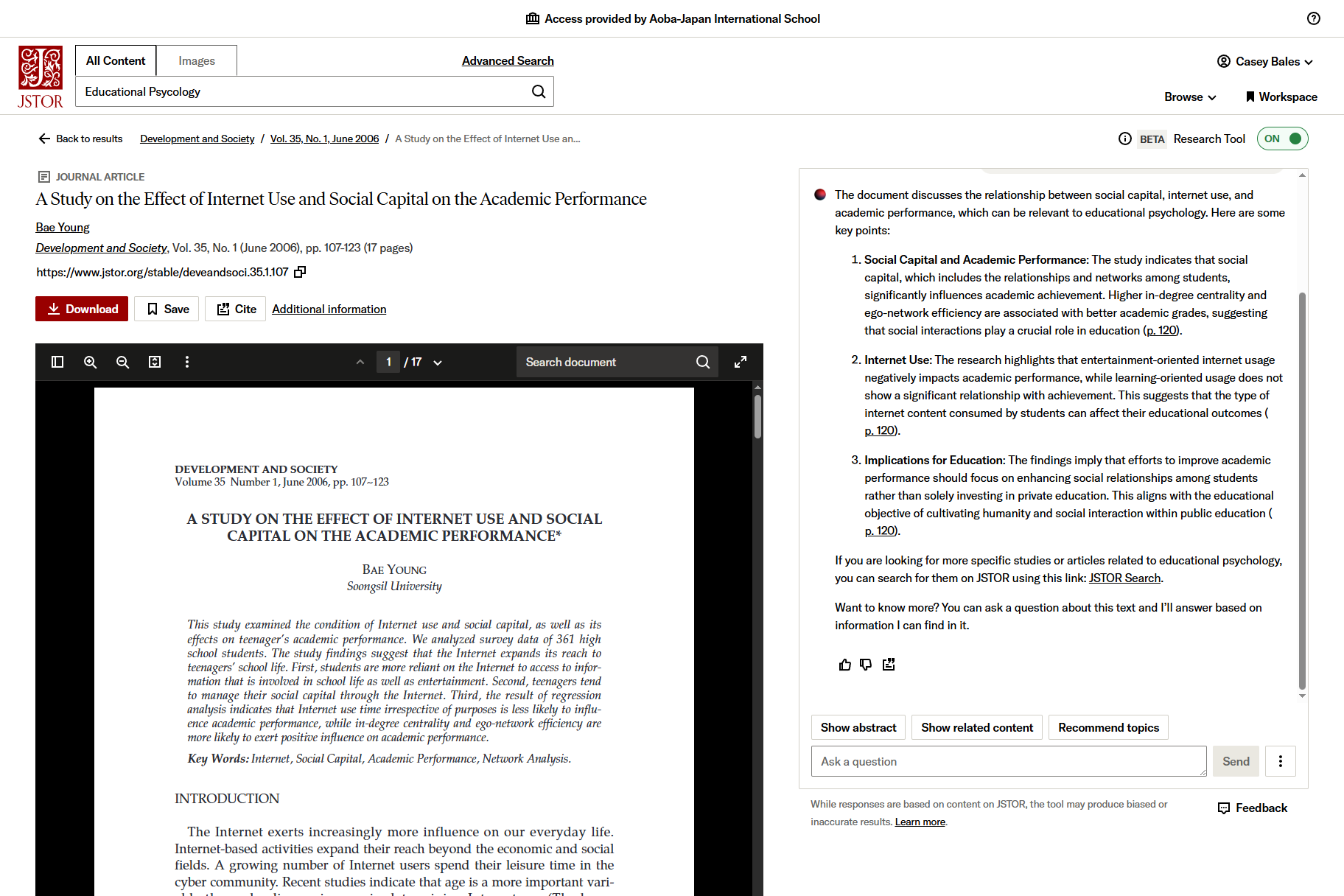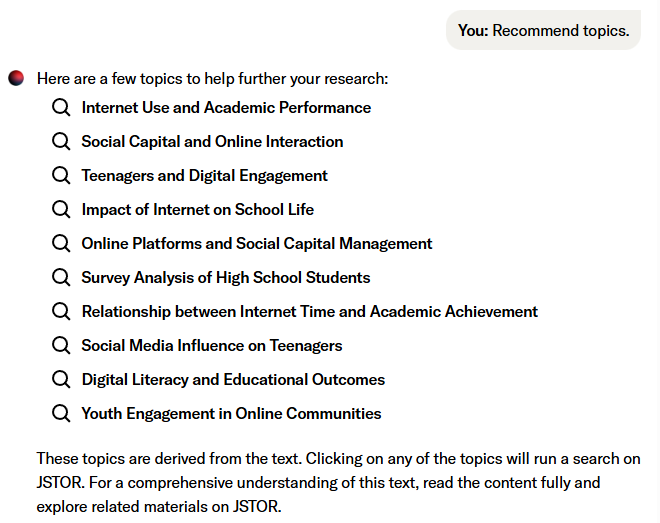JSTOR: How to access and use the service?
Who is this for?
Primarily for high school students and teachers for academic research.
What is JSTOR?
JSTOR (short for Journal Storage) is a digital library containing thousands of scholarly articles, books, and primary sources. It’s widely used in universities and international schools around the world. At Aoba, JSTOR is primarily used by students in the Diploma Programme (DP) to conduct high-level academic research for their Extended Essay (EE), Internal Assessments (IAs), and TOK presentations. Teachers also use JSTOR to guide students toward credible sources and deepen subject knowledge, and in their own research and publications, such as YETI.
How to Access JSTOR
JSTOR is provided through a school-wide license and managed by the Library and ICT. Students and staff must log in using SSO with their school-provided Google accounts.

Here's how:
Go to https://www.jstor.org
Click “Log in” through your school or library
Select the Google login option and sign in with your school email
If you experience any issues, please contact the Library or ICT team through the Help Desk.
Why Use JSTOR?
Peer-reviewed, credible sources
Ideal for IBDP research expectations
Covers a wide range of subjects: history, science, literature, politics, philosophy, and more
Helps build citation, critical thinking, and academic writing skills
Tips for Students
Use keywords, not full questions
Save articles to your My JSTOR account by clicking the 🔖 SAVE icon
Double-check publication dates and source credibility
Combine JSTOR with other trusted sources and databases
For Teachers
Use JSTOR to find articles for lesson content or model source analysis
Show students how to identify academic tone and structure
Recommend JSTOR for Extended Essay and IA prep
Encourage use of citation tools like Zotero, Mendeley, or Google Docs’ citation feature
How to Use the JSTOR Research Tool (Beta)
JSTOR includes an AI-powered research assistant to support deeper engagement with academic sources. It can:
Summarize long academic articles
Suggest related research questions and themes
Extract key quotes and citations and more!
How to Enable the AI Tool
Search for an article or chapter
Look at the top right and toggle the Research Tool to ON

You will then see the article on the left side, with the AI interface on the right as shown below.

Using this tool you can conduct various actions related to the article. Such as:
Asking it for specific type of summary, or related topics, or other articles.

You can also ask it to prepare the citation in various formats. Be sure to double-check the formatting against guides like Purdue Owl, etc.

You can also ask it to scrub the article for sections or sentences that mention a specific term or idea that you are looking for. By clicking the page# it will take you the exact sentence and highlight it for you. This is especially helpful when looking for a specific aspect to cite/paraphrase.

Note: This tool is in beta. Students should always verify and critically evaluate any information the AI provides.
